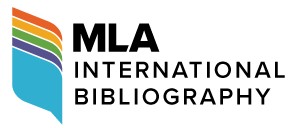Abstract
Ekphrasis, derived from classical rhetoric, was a traditional paradigm in art history writing, but current scholarship has overlooked how it transformed from a rhetorical device into a paradigm of art history writing. Considered as a vivid description of the “qualities of ekphrasis”, enargeia was the rhetorical source of ekphrasis's characteristics such as visualization and emotional persuasiveness. Through transformation and use by classical rhetoricians, ekphrasis shifted from a rhetorical device into a method in art history writing, and further into a paradigm featuring visualization and emotional persuasiveness during the Renaissance. Today, ekphrasis and contemporary art have encountered the same dilemmas and necessities for transformation, and thus it becomes more necessary for ekphrasis to be open and useful for contemporary art.
Keywords
ekphrasis, rhetoric, art history writing, visualization, emotional persuasiveness
First Page
170
Last Page
180
Recommended Citation
Dai, Yingying. 2025. "Ekphrasis as a Paradigm of Art History Writing and Its Contemporary Circumstances." Theoretical Studies in Literature and Art 45, (1): pp.170-180. https://tsla.researchcommons.org/journal/vol45/iss1/16


